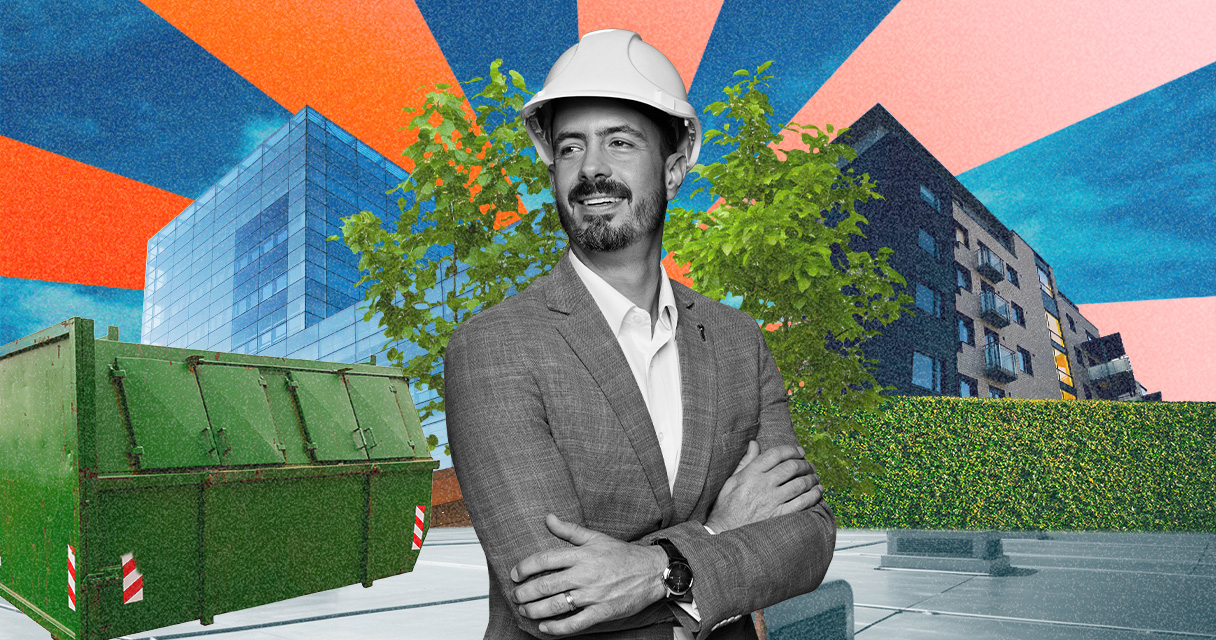CHAMPION
FACILITIES MANAGER
Using smart technology to lower energy costs and emissions is just the start of the story. Facilities managers deliver sustainable facilities and ensure buildings create value for owners, tenants, visitors, and communities.

“I think people who’d be attracted to facilities management are disruptive thinkers – people who thrive on pressure, and like high paced, high impact jobs.”
Ryan D’Olimpio is speaking from the boardroom of a Perth office tower, describing what it takes to run a building with hundreds of staff and thousands of occupants.
An electrician by trade, Ryan is a facilities and building services manager for QV1, a 65,000 square metre high-rise, premium grade commercial office tower that’s one of Perth’s tallest and best-known buildings.
“Essentially, the job is interacting with a lot of different people to keep the building running smoothly and safely,” he says. “There’s many different stakeholders at play. One minute I might be talking to an electrician about an issue on a certain floor, the next I’m speaking with an elevator technician about a fault with the lifts, to cleaning contractors about cleaning requirements , then it could be a tenant, one of the building owners, or an energy provider,” Ryan says. “You have to be able to switch your mode of thinking really quickly, think technically as well as laterally and not let emotion cloud your decision-making process.”
“If it’s quiet and the phone’s not ringing, then you know the phone’s probably broken,” he laughs.
Ryan describes his journey to facilities management as an accident, which he says is a common story in the industry.
“Like me, I think the majority of facilities managers who manage high-profile, high-demand sites are from a trades background,” he explains. “Electricians, plumbers, security officers and operations people, because they understand the way property operates.”
“It’s a great career path, but definitely a lesser-known one,” he continues. “Anyone who’s mechanically or tech-minded who can operate under pressure could do the job, and often, you get a start when someone already in the industry sees your potential.”
Ryan explains that while there’s no immediately-required qualification to become a facilities manager, he does recommend doing some of the industry-specific courses to sharpen your skills.
“I’ve done a Certificate IV in Property Management, and you’ll usually work closely with a property manager that is a registered, licensed real estate agent who has an understanding of how money and budget is allocated,” he says.
And if you find yourself wondering what facilities management has to do with reaching net zero emissions, Ryan is happy to explain.
“I’ve been in this role 15 years, and sustainability and environmental impact was always a consideration,” he says. “Now, though, development and implementation of ESG strategy is a primary function for facility managers. It’s a must, and everybody involved with a building, from the building owners to the occupants of the building, are looking to us for guidance.”
Ryan and his team are working on a practical roadmap to get QV1 to net zero emissions and are currently focusing on electrification. “We have 10 food and beverage outlets, so having the conversation with them about transitioning away from gas for cooking is an interesting one.”
“In the mid-2000s when I started, the emphasis was very much on creating efficiency so buildings could run better without as much stress on the plant and equipment,” Ryan says. “But once you pick off the low-hanging fruit and start to see results like lower energy consumption and reduced operational costs, it becomes an obsession,” he laughs.
“The evolution of technology over the past five years has been a game-changer for energy efficiency, but the best results are achieved through carefully considered investment. In QV1, between 2008 and now, we’ve halved our base-building energy demand through upgrades to heating, ventilation and air conditioning systems, lighting, lift upgrades, energy management system upgrades – it all adds up to helping us get to net zero.
From a practical perspective, Ryan says the key is economising what you already have, before making a capital investment. As an example, he explains that before the building upgraded to LED lighting, they simply asked security to make a habit of turning off lights each night.
“It’s about refining what you have to make it perform as best as you can. Being clever about spending as little as possible to have the biggest impact.”
Ryan D’Olimpio is a Building Services Manager at QV1. He holds a Certificate III in Electrotechnology and a Certificate IV in Property Management.